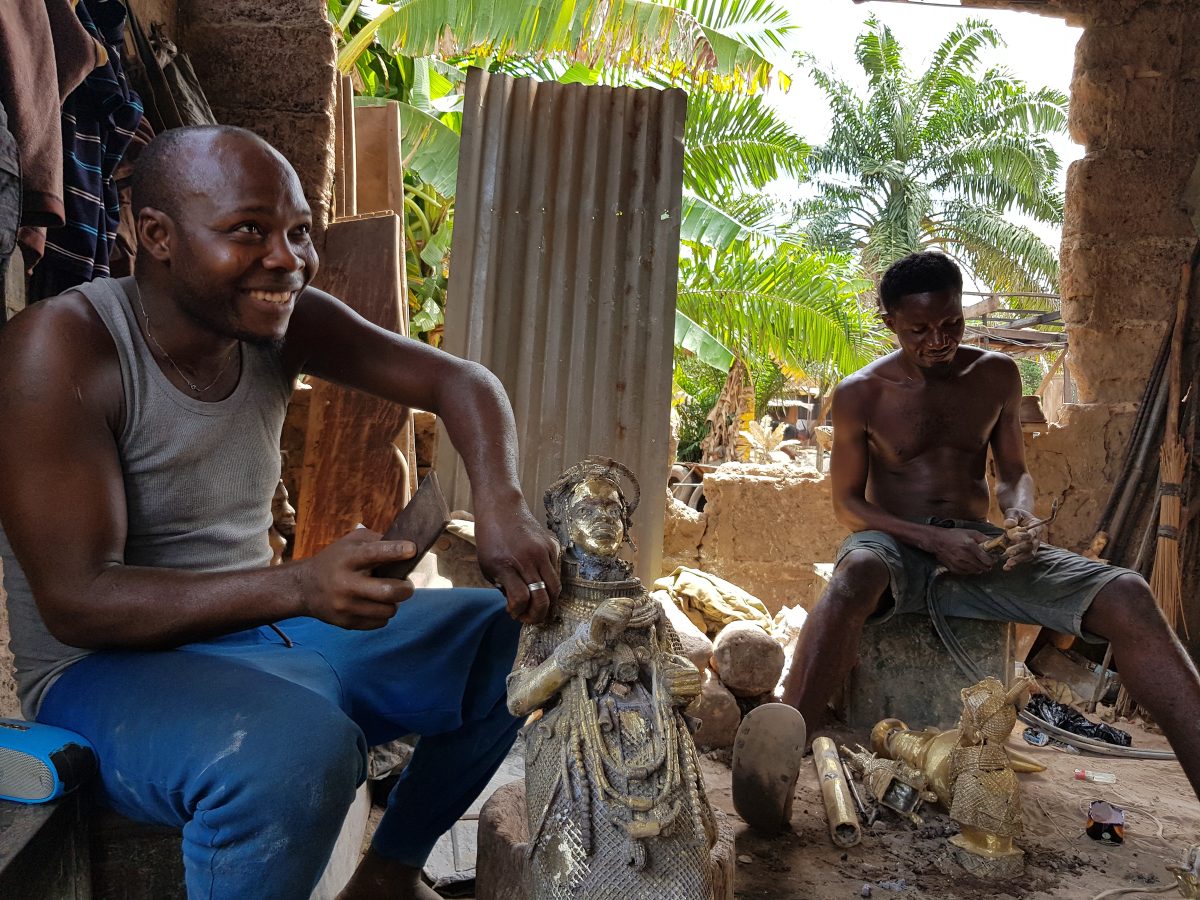
When the British invaded the West African kingdom of Benin in 1897, they ransacked the palace and looted thousands of metal and ivory sculptures and carvings collectively known as the Benin Bronzes. But they could not erase all traces of an ancient civilisation. Benin City, the kingdom’s historic capital in what is today southern Nigeria, is still ringed by a series of earth walls and moats, which date back to the 13th century. The walls are over 50 feet high — compelling evidence of the social and political power once wielded by Benin’s kings, or Obas. These walls and moats are listed as Nigerian national monuments. Sadly, this offers them little protection. Rogue contractors looking for building material dig at the sides of the walls with impunity, while the moats are full of sewage and trash. Dr Ekhaguosa Aisien, a historian of Benin, told me that when a group of Chinese visitors came to see the walls, hoping to see the equivalent of their own Great Wall, they were shocked at the state of them. “They left disappointed,” he said.
The dismal state of the walls raises troubling questions about the success of the current movement for restitution of the Benin Bronzes. For decades western museums justified their possession of the bronzes on the grounds that Nigerians lacked the resources, or could not be trusted to protect their own cultural patrimony. This argument ignored a compelling moral logic: The Bronzes were stolen, so what right do thieves have to determine the conditions under which they are returned? But while a return of the Bronzes would be overwhelmingly popular in Benin City, it is surprisingly easy to find people with reservations. During an interview at his house in Benin City in 2019, Patrick Oronsaye, an artist and member of the royal Iwebo society, told me that if the Bronzes come home opportunists will quickly “recast them and fake them … and sell the original pieces.”
The history of Nigeria’s government-run museums is discouraging. They already have a superb collection of Benin Bronzes — many were returned to Nigeria in the 1940s and 50s — but have done a poor job at displaying them, and, in some notorious cases, failed to prevent their theft again, back to Europe and the United States. These museums are underfunded, and the public often seems indifferent to their fate. Today most visitors to the National Museum in Lagos are children on school visits, trudging dutifully past dimly lit and sparse exhibits.
The Nigerians leading the campaign for the return of the Benin Bronzes are all too cognizant of this sad history. Phillip Ihenacho is on the board of the Legacy Restoration Trust, which aims to build a new museum in Benin City to house the treasures several European institutions now say they wish to return. “The people who are most sceptical about the return of these objects are Nigerians; the people who worry the most are Nigerians,” Ihenacho says. And yet he’s optimistic that this time, Nigeria can make a success of restitution. The new museum, to be known as the Edo Museum of West African Art, or EMOWAA, will certainly benefit from international goodwill. Its renowned architect, Sir David Adjaye, designed the Smithsonian National Museum of African American History and Culture in Washington DC. The British Museum and German government have said they’ll help raise millions of dollars for the early stages of the project.

Godwin Obaseki, the governor of Edo State, of which Benin City is the capital, is also an enthusiastic supporter. Development projects in Nigeria are notoriously dependent on the whim of politicians. Obaseki will complete his final term in 2024. But Ihenacho argues that the Legacy Restoration Trust, with a majority of independent directors on its board, is designed to survive the vicissitudes of Nigerian politics.
EMOWAA will not be completed until 2025 at the earliest, at an estimated cost of $100 to $150 million. But the real challenge may come later. Who will visit this museum, and how will it sustain its costs? Nigeria, with a reputation for corruption and violence, is not a tourist destination. Its government is an unreliable source of income, and local people cannot afford large entrance fees. Instead EMOWAA will have to be creative and look at multiple revenue opportunities; endowments, commercial sponsorship, renting space for retail and entertainment. Nigeria’s business leaders will have to give generously, politicians and traditional leaders will have to put rivalries to one side, and contemporary artists will have to embrace the project.

Crucially, if EMOWAA is to flourish, it will have to be rooted in the customs and traditions of the Edo people. “It cannot happen as a kind of Western glass box, a vitrine; it would mean nothing. It would be totally disregarded by the community,” Adjaye told me via Zoom. He envisages a cultural quarter that incorporates the Oba’s palace and Benin’s walls, and “which shows how those bronzes, ivories and corals were operating within their societies.”
The opening of a new museum in Benin City, full of bronzes returned from Europe and perhaps the United States, would be a moment of huge historical significance. Much could still go wrong. Recent Nigerian history is full of disappointments and squandered opportunities. But now, for the first time since the Benin Bronzes were stolen in 1897, Nigerians finally have the chance to play a crucial part in determining their future. It is an exciting time.
0 Commentaires